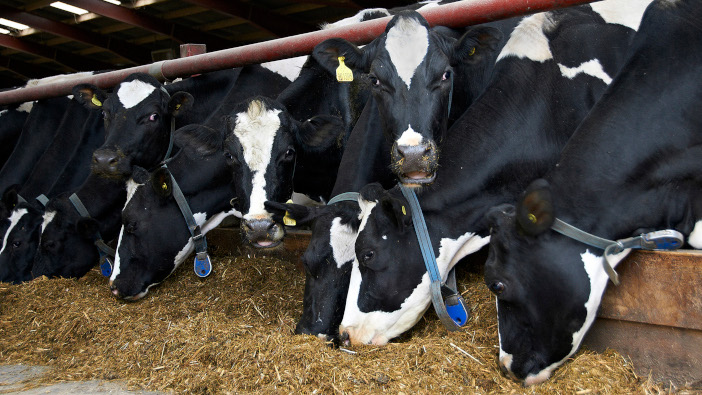Dr Richard Kirkland, global technical manager for Volac Wilmar Feed Ingredients, says that in the hotter months dairy producers should have a plan in place to adjust rations; to offset production losses associated with heat stress.
“When temperatures reach 25°C, cows can really start to be impacted by heat and reduce feed intake. Intake continues to decline as temperatures increase, with research data demonstrating a 20 to 40% decrease in dry matter intake when temperatures reach 40°C,” said Dr Kirkland.

A reduction in dry matter consumption results in a reduction in energy intake, meaning that less energy is available for production.
The effects of heat stress also become more pronounced when humidity is high: the temperature-humidity index is often used to indicate the degree of stress on dairy cattle. Higher humidity will see more-severe heat stress issues at lower temperatures. While heat stress also means higher maintenance requirements for the cow.
“If not managed, cows will quickly fall into an energy deficit,” said Dr Kirkland. “As a result, other functions including fertility and milk production are significantly reduced. Research studies have reported conception rates falling as low as 10 percent during the hottest months of the year and milk yield falling by 35 percent.”
Increasing energy density
Dr Kirkland explained that energy density, delivered via rumen-protected fat, should be a key priority for mitigating heat stress in dairy cows.
Supplementing diets with energy-dense nutrients like rumen-protected fats is the most effective way to help meet energy requirements while not adding to the acid load in the rumen. When compared to cereals, a proven calcium salt fat supplement like Megalac has around 2.5-times the concentration of energy, making it a great ingredient to safely increase the energy supplied in every bite of feed.
Fat is also considered a ‘cool’ ingredient, generating considerably less heat during digestion and metabolism compared to other feeds – something which producers must be aware of when choosing other feed ingredients.
However, producers need to consider the most appropriate type of fat supplement based on the fatty acid profile of the supplement to best meet farm targets, rather than just considering the direct energy element.
Selecting fatty acids to support milk contracts
“Cows, in early lactation and approaching their next breeding window, would benefit from a traditional calcium salt supplement that offers a source of rumen-protected oleic acid (C18:1). This helps improve body condition, the development of eggs and embryos, and total diet fat digestibility,” explained Dr Kirkland.
“On the other hand, the high-C16:0 (palmitic acid) supplements are effective at stimulating milk fat production and may be of interest under heat stress conditions where milk fat often declines. However, palmitic acid can cause partitioning of nutrients away from body fat resulting in lower body condition which may not be desirable,” he concluded.


